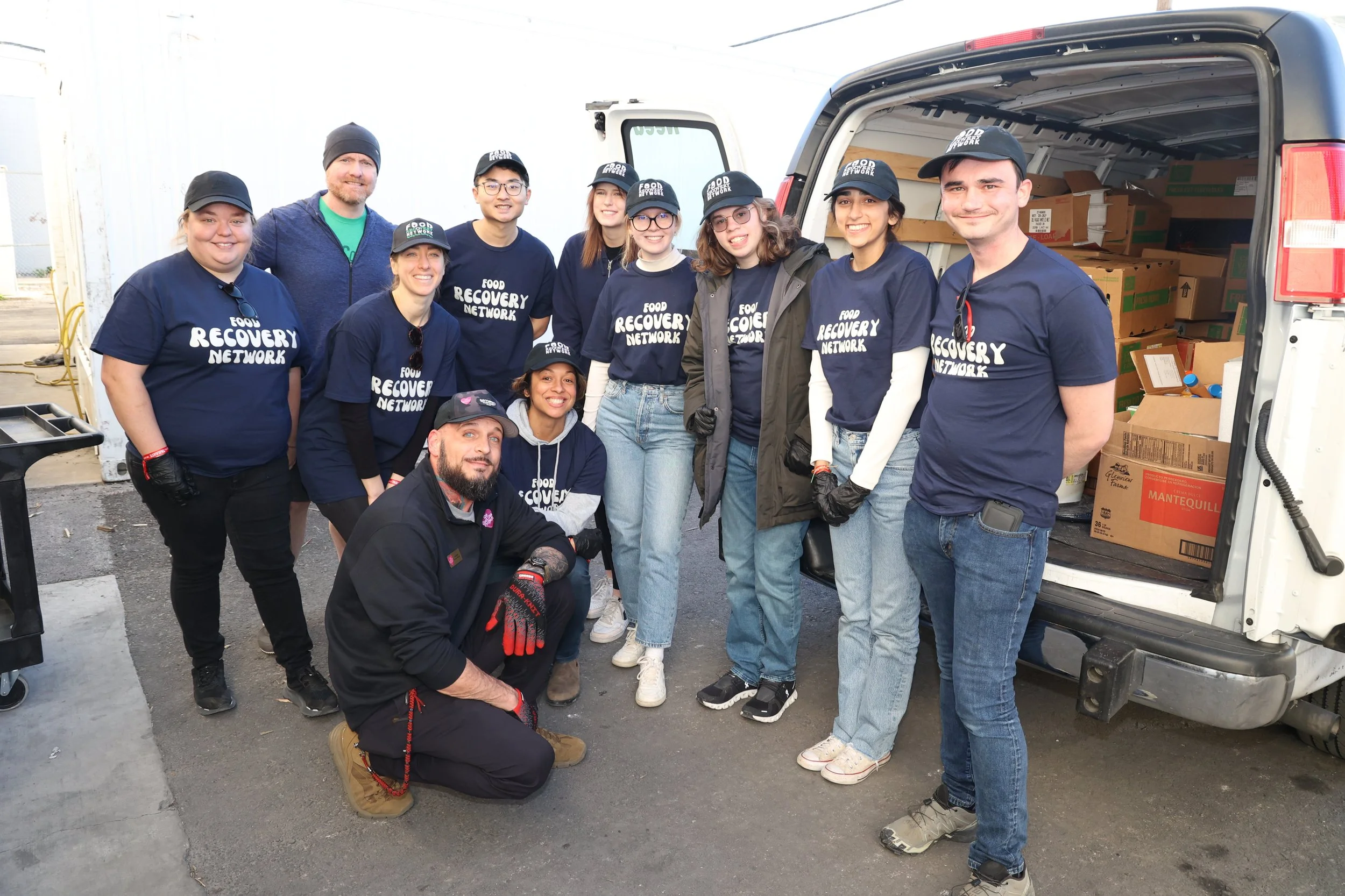On April 4th, 100 Food Recovery Network student leaders, co-founders, and staff members participated in FRN’s first ever food waste Lobby Day. This was an exciting foray into the advocacy world for FRN, and it happened during an important period for food waste legislation and activism. During Lobby Day, FRN students met with over 30 staffers from congressional offices to advocate for Rep. Chellie Pingree’s (D-ME) Food Recovery Act and Rep. Jerry McNerney’s (D-CA) Food Waste Accountability Act, while also sharing their experiences to raise awareness for food recovery as a practical solution to food waste and hunger.
FRN believes in the power of young people to make change. As FRN Co-founder and Director of Innovation Cam Pascual described in her recent TedTalk, many students can feel overwhelmed when confronted with seemingly insurmountable social and environmental challenges. FRN provides a feasible solution to problems and supports students as they create change. With these ideals and culture in mind, FRN jumped at the opportunity for students to participate in the legislative process and engage with their elected officials. Lobby Day was the perfect action-oriented event to end our first National Food Recovery Dialogue (NFRD). Mallory, a leader of the University of Minnesota's FRN chapter, described her final action of the weekend as unforgettable:
“Any time I'm able to talk about my passions is a good experience, but sharing my strong feelings about food waste with staff members of Congress was surreal. It was amazing to see the shock and interest on government workers' faces as we told them about what we do, and also about what they can do to help. The thought that we as humble students possibly influenced our lawmakers to make positive change is a memory I'll keep forever.”
We’re proud that FRN students could share their stories and knowledge with policymakers, and that they did so in such poised and thoughtful ways.
One of the major successes of FRN’s 2016 Lobby Day was a congressional meeting that encouraged Rep. Chaka Fattah from Pennsylvania to co-sponsor the Food Recovery Act. This brings the total number of co-sponsors for the bill to 16. Johanna Hripto from the Lycoming College FRN chapter reflected on this success after the event:
“Overall I think it [Lobby Day] was a huge success- Representative Fattah, whose staffer we talked to, agreed to co-sponsor the bill! I can't help but feel that myself and the other members of my Pennsylvania group helped play a role in his decision. It was intimidating at first but afterwards I felt so much more confident in the work we are doing as an individual chapter and as an organization. I also gained a deeper understanding of how politics plays a role in not only food recovery but in many social issues.”
Looking ahead, FRN hopes to inspire policymakers to propose and pass more legislation related to food recovery through our continued support to chapters that excel in fighting waste and by organizing future Lobby Day events. Our national lobbying efforts have also inspired chapter leaders to engage in advocacy at the state and local level, and FRN hopes to support these efforts. Rylie Wolff, a leader of the Portland Community College FRN chapter, described the inspiration she drew from Lobby Day:
“Lobby Day was an empowering experience. Not only was I surrounded by like-minded change-makers, but being able to speak to people who had the power to put those bills into law was incredible. Even if the State Reps or their staffers didn't seem inspired, I felt doubly so. Knowing that I was practicing and in the back of my head collecting resources to ‘do better next time.’ In my own chapter, we want to lobby at our own State capitol now. Lobby day planted the that seed and gave us the tools to bring that idea into fruition.”
The FRN team would like to extend a Special Lobby Day thanks to:
- Co-Founder Lauren Begham and staff member Karen Mawdsley, our fearless U-Haul drivers
- Ben Simon and Nick Murphy, FRN Co-Founders who helped their teams rock congressional meetings
- Representatives Chellie Pingree and Jerry McNerney, the legislators behind the Food Recovery Act and the Food Waste Accountability Act
For more food recovery activism and news, check out the Ad Council’s recently released campaign against food waste, and stay tuned for more thought regarding food recovery policy on our blog.






